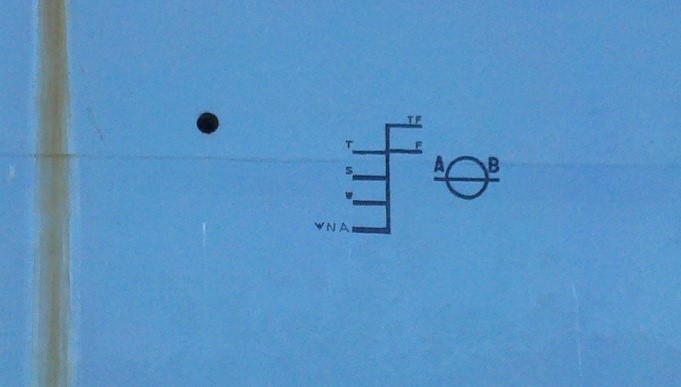Remember when you were just learning to sail and the boat heeled over for the first time? My instructor was calm, but I’m told I was yelling “Help! Yikes! Eeek!”…although I’m pretty sure it was quite a bit more dignified than that. From ancient times to the present, this feeling that the boat might capsize or sink has been, well, a concern, for good reason. It’s the space age, and boats are still going to the bottom.
The Cretans established guidelines for loading boats as early as 2500 BC, but it wasn’t until 1930 that there was an international agreement on the standards developed by an Englishman named Plimsoll in the 19th century. That circle with a line through it next to a sort of ladder graphic that you see on the hull of the Red Oak Victory is the result. This represents the waterline maximum that the ship can safely be immersed to, depending on season and salinity represented by the various horizontal lines.

So what’s safe for our sailboats?
The Net Register Tonnage of Tradewinds’ Lionheart is 5.49, which means the volume that can be used for cargo or passengers is 549 cubic feet. The weight of this volume of water is 549 x 7.5 [gallons per cubic foot] x 8.333 [weight of a gallon of water] = 34299 pounds. So if the boat itself weighed nothing and it was filled with water, the volume of the boat would displace 34299 pounds of water. But the empty boat already weighs 9170 pounds, so if we subtract that from 34299 we get 25129. This is equal to about 405 cubic feet or a little over 3000 gallons or roughly ¾ of Lionheart’s interior volume. So if we fill Lionheart with 3000 gallons of water, she will weigh the same as the surrounding water and sink. But this assumes a perfectly stable, flat sea. Boating enthusiasts have adopted a much more conservative rule of thumb for capacity of passengers which you will recognize: length times beam divided by 15. On Lionheart this gives a capacity of 20, which is quite a bit more than you’re likely to have aboard. If we assume 184 lbs per person, we get a total of 3680 pounds, about 1/7th of what it would take to sink the boat. The other 6/7ths represents her reserve buoyancy, allowing that heeling, and downsizing my “Eeek!” to “Yow!”

Interesting, thank you Tony. 3,680 pounds seems like not that much once you start gearing up and provisioning for an extended passage…
If I remember correctly, we figured about 2000 lbs of fuel and provisions on Maverick, plus of course a whole lot of spares, tools, books, batteries, extra ground tackle, and of course, ourselves. Let’s call that an additional 1000 lbs., as large batteries aren’t light. So 3000, although this is just a guess as we didn’t weigh everything we put aboard. Maverick was a 39-footer with a beam of just a little over 11 ft. So using the formula above, 39 x 11 divided by 15 = 28.6 and multiply that by 184 (if I remember, I found that figure by consulting some information on average US weight for, like elevator calculations or the like) we get about 5,262. So we’re not in danger yet. That figure obviously has a high safety margin, as it is meant to indicate the point at which the boat is not seaworthy.
That said, Maverick was sailing just a bit below her lines fully loaded, which is pretty typical for a bluewater boat, unless you have a really heavy displacement boat.
Now, there is a good justification for a heavy boat although you’d never find a racer buying one. That is that on a heavy boat (Maverick was 19,000 lbs. empty, and we’d call that medium displacement), the weight you put aboard is a smaller percentage of the total, and so has less of an effect on the designed sailing characteristics. On the other hand, the boat’s going to be a pig in light air.
Ain’t no simple solutions to boats.